 The Kosten syndrome is a specific otoneurological disease. There is a disease as a consequence of dysfunction of the temporomandibular joint( TMJ).It arises because of the lack of a large number of teeth, malocclusion, or in the presence of deforming arthrosis of the jaw joints.
The Kosten syndrome is a specific otoneurological disease. There is a disease as a consequence of dysfunction of the temporomandibular joint( TMJ).It arises because of the lack of a large number of teeth, malocclusion, or in the presence of deforming arthrosis of the jaw joints.
This syndrome was first described by the American otolaryngologist Kosten in 1934.In the process of studying the histories of his own patients, he discovered a certain relationship between ear pain and jaw pathology.
Often, the task of treating Costen's syndrome lies with dentists who are engaged in prosthetics of missing teeth or correction of occlusion.
Contents of
- What is TMJ and what are its functions?
- Who is at risk?
- Stages of development and consequences of Kosten's syndrome
- Stages of development of the disease
- Complications and possible consequences
- How is the syndrome diagnosed
- Specificity of treatment
- What you need to know in order to avoid the disease?
What is TMJ and what are its functions?
Temporomandibular joint dysfunction( TMJ) is a fairly common disease. According to statistics, up to 65% of patients of different ages have this problem. Diagnosing pathology is difficult because of the many different symptoms that are difficult to relate. The disease can be confused with otitis, dental diseases or other jaw pathologies. Specificity of the disease sometimes requires treatment also from the side of neurology and psychology.
The temporomandibular joint is located in front of the ear and connects the lower jaw with the temporal bone of the skull.
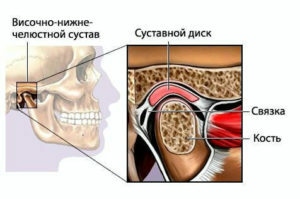
The structure of the temporomandibular joint
It consists of a block of the lower jaw, an intraarticular disc, a capsule, a ligament and the joint surface of the temporal bone.
The joint is very mobile, it allows us to move the jaw up and down, from side to side, talking and chewing food. The movements of the joint are controlled by the muscles surrounding it. The TMJ lays a heavy load, which is associated with chewing, speech and facial expressions.
For various reasons, VNS dysfunction may develop, which causes such diseases as:
- myofascial syndrome;
- arthritis;
- arthrosis;
- chronic subluxation of the lower jaw;
- Kosten syndrome.
This leads to joint damage, inflammation and soreness.
There are a number of different reasons that lead to the development of this syndrome. The main factors of the appearance of the disease include:
- incorrect structure of dentures;
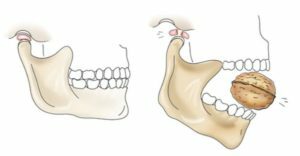
- overstrain of jaw muscles with frequent eating of excessively solid foods;
- wrong tooth filling;
- presence of bruxism;
- certain problems with the exchange of minerals in the body;
- serious infectious diseases;
- problems with collagen production;
- incorrect jaw structure, which leads to incorrect distribution of the load;
- incorrect bite.
Who is at risk?
There are certain categories of people who are particularly prone to the possibility of developing Kosten's syndrome:
- people over 50;
- women who are in a state of menopause;
- people who received jaw injuries;
- presence of chronic inflammatory processes in the jaw region;
- people with the wrong bite;
- patients with several missing teeth;
- is a hereditary predisposition to osteoporosis.
Stages of development and consequences of the Kosten syndrome
It should be noted that quite often this syndrome develops without any signs. In this case, the main symptoms of this disease include:
- discomfort when chewing;
- crunch and clicks when opening the mouth;
- problems with jaw mobility;
- overstrain of the masticatory muscles;
- unobtrusive asymmetry of the face;
- pain in the jaw, eye and ear region.
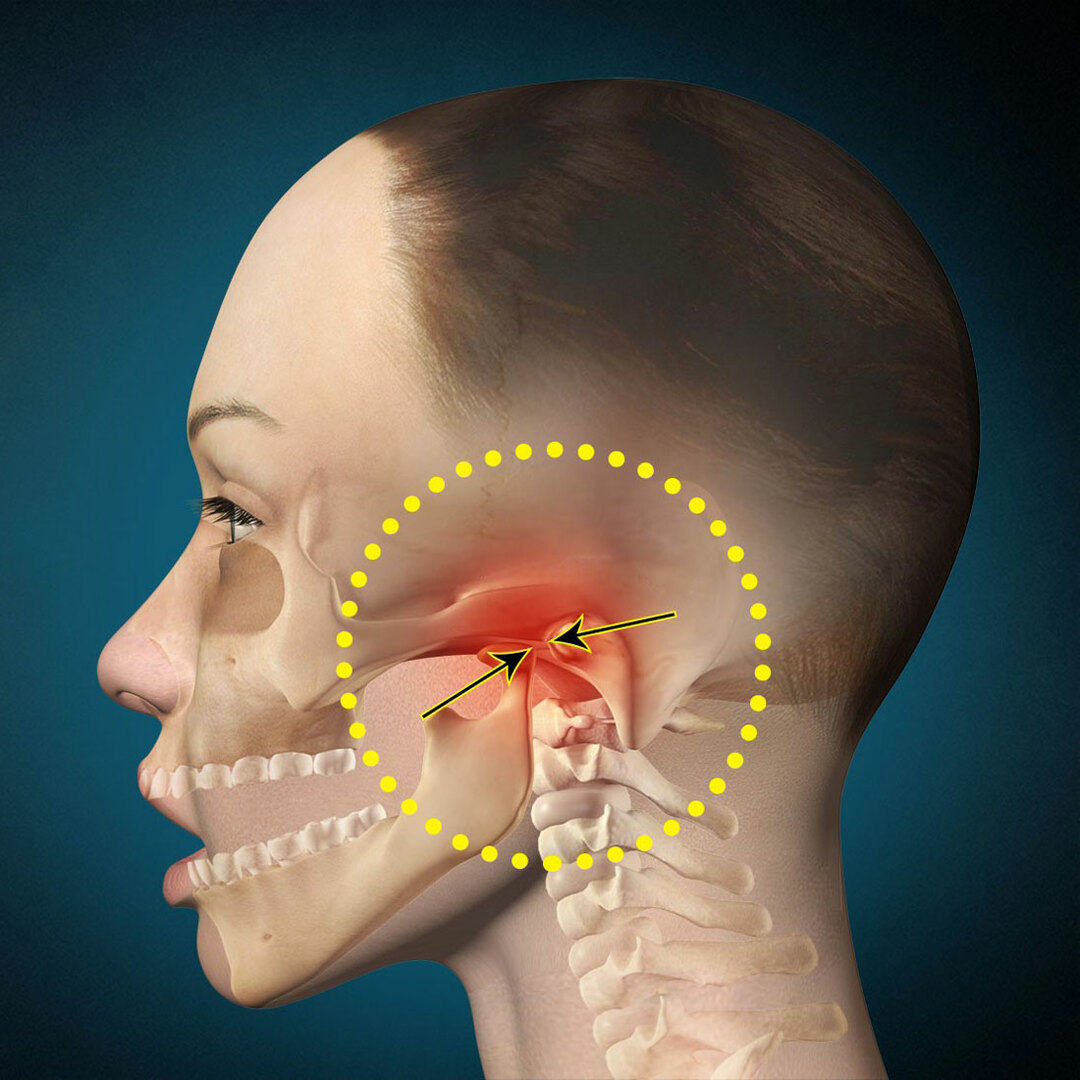
With prolonged absence of treatment, in addition to deterioration of hearing and vision, complete immobilization of the jaw joints is observed.
Stages of development of the disease
There are four stages of development of the Kosten syndrome:
- First .There is a certain reduction in the gap between the joints, as well as a barely noticeable loosening of the ligaments.
- The second .There is an ossification of the condylar process, as well as a decrease in mobility in the joint.
- Third .The stage is accompanied by complete cartilaginous degeneration, extensive sclerosis of the joint surface, as well as restriction of jaw movements.
- Fourth .When diagnosed, fibrotic ankylosis can be detected, which is treated exclusively by surgical intervention. In addition, there are strong persistent pain, which can not be pacified with the help of analgesics.
Complications and possible consequences of
In the absence of adequate treatment, the patient's condition will only worsen over time. The patient has chronic pain caused by the following complications:
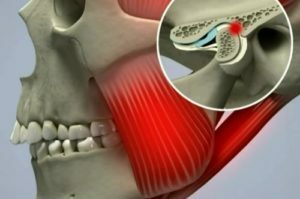
- Physiological changes in the jaw joint are observed. This leads to a deterioration in the chewing of food and problems with the stomach and digestion. Patients with similar problems can only eat soft food because of the inability to chew.
- In the future, there is a significant weakening of the ligaments of the chewing apparatus.
- If you do not start treatment in time, it can lead to the inability to open your mouth.
In the case of joint damage, salts are deposited. Therefore, it is extremely important to timely treat the disease. Together, this syndrome can seriously affect the deterioration of human health through an indirect negative impact on various systems and organs.
How the
syndrome is diagnosed If the patient has no joint damage, but there are certain complaints, three-phalanx testing is used to diagnose the disease.

When the mouth is open, the joints of the middle, ring finger and index finger located between the phalanges must pass clearly between the lower and upper incisors. With defeat of the masticatory muscles this will be impossible to do.
Other diagnostic methods are used only to confirm the final diagnosis:
- electromyography of the muscular chewing apparatus;
- use of impedanceometric examination of the middle ear;
- application of a panoramic x-ray of the lower jaw;
- use of CT or MRI.
Specificity of treatment
Treatment of the disease consists of the following measures:
- adjustment of the diet;
- use of laser, ultramagnetic and ultrasound therapy;
- without fail, all dentures are treated;
- use of medical therapy to eliminate pain, improve tissue nutrition, reduce muscle tone, and use soothing herbal remedies.
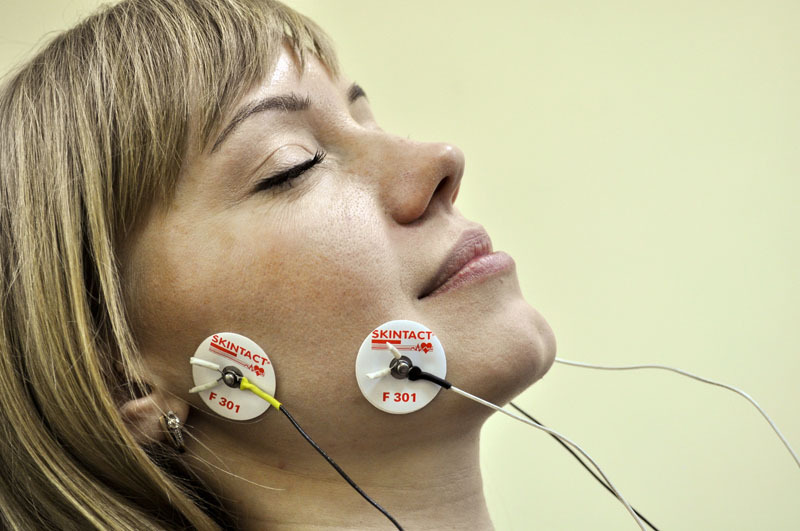
Often, complex therapies are used that must eliminate inflammation and pain and restore the former joint mobility, namely:
- Cortisol injections are injected into the joint cavity.
- Ionophoresis is used with simultaneous use of novocaine and potassium iodide.
- Patients are often assigned a special orthopedic device that restricts the movement of the jaw. This device has to be worn for about 4 months. This method is aimed at reducing the load on the joint.
- If necessary, correction of the occlusion is performed using surgery or prosthetics.
If the complex of such measures does not bring a visible result, the attending physician can offer a surgical operation to the patient.
Depending on the severity of the situation and the attendant problems, the cost of treating Costen's syndrome can vary greatly. In some cases, you can do with sparing treatment with the use of exclusively medications. In other situations, the patient can be cured by surgery and subsequent prosthetics.
What you need to know in order to avoid the disease?
Doctors recommend the prevention of this syndrome to avoid frequent intake of very solid foods.  Also, you should completely give up the habit of squeezing your teeth in a state of nervousness.
Also, you should completely give up the habit of squeezing your teeth in a state of nervousness.
At the first symptomatic manifestations and any discomfort during chewing, immediately consult a doctor to diagnose the cause of this condition.
Timely access to a specialist and accurate diagnosis is a guarantee of successful treatment of Kosten's syndrome, which will make it possible to avoid more serious consequences and complications accompanying the disease.
Costen's syndrome is a rather serious pathology affecting various systems and organs of the human body. In order to minimize the risks associated with the occurrence of this disease and its consequences, you should pay more attention to your own organism and, with the slightest problems, contact the physicians.
